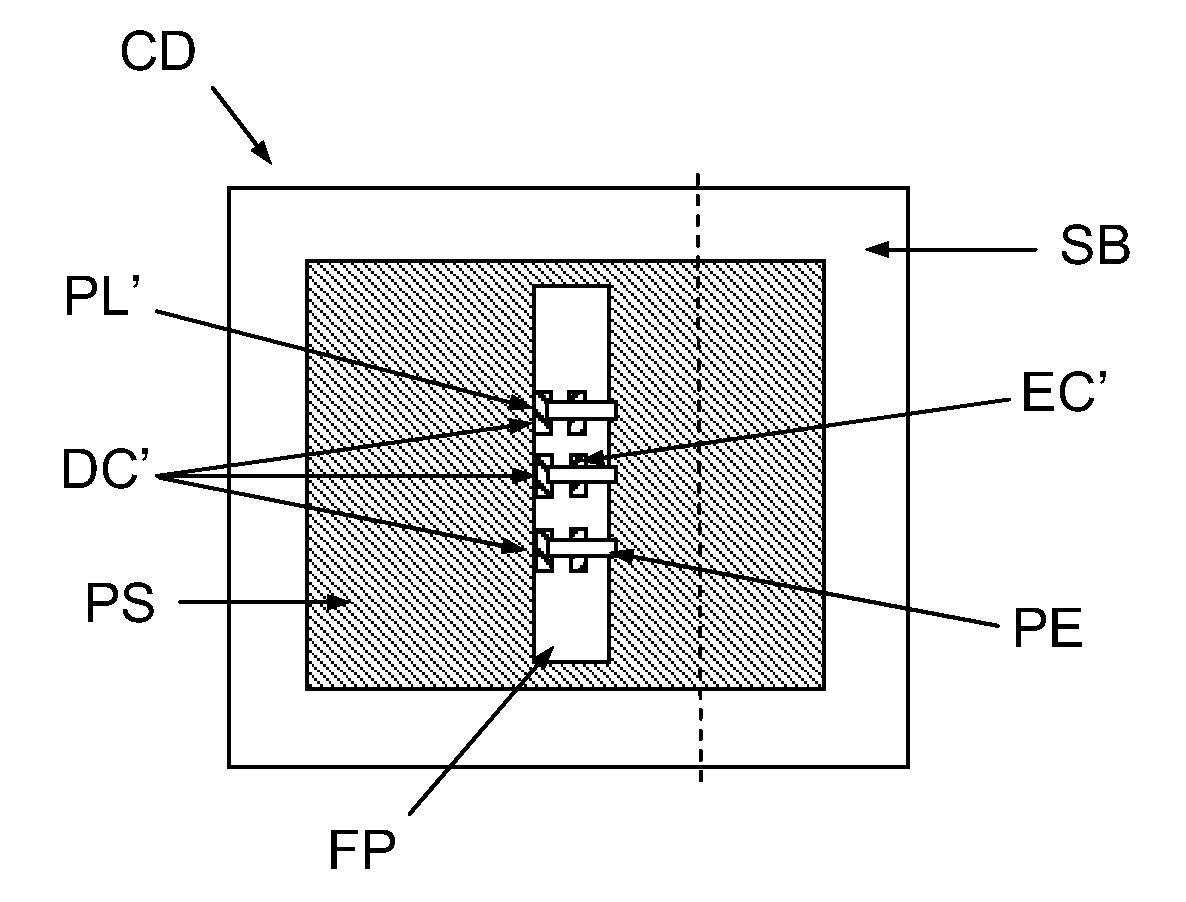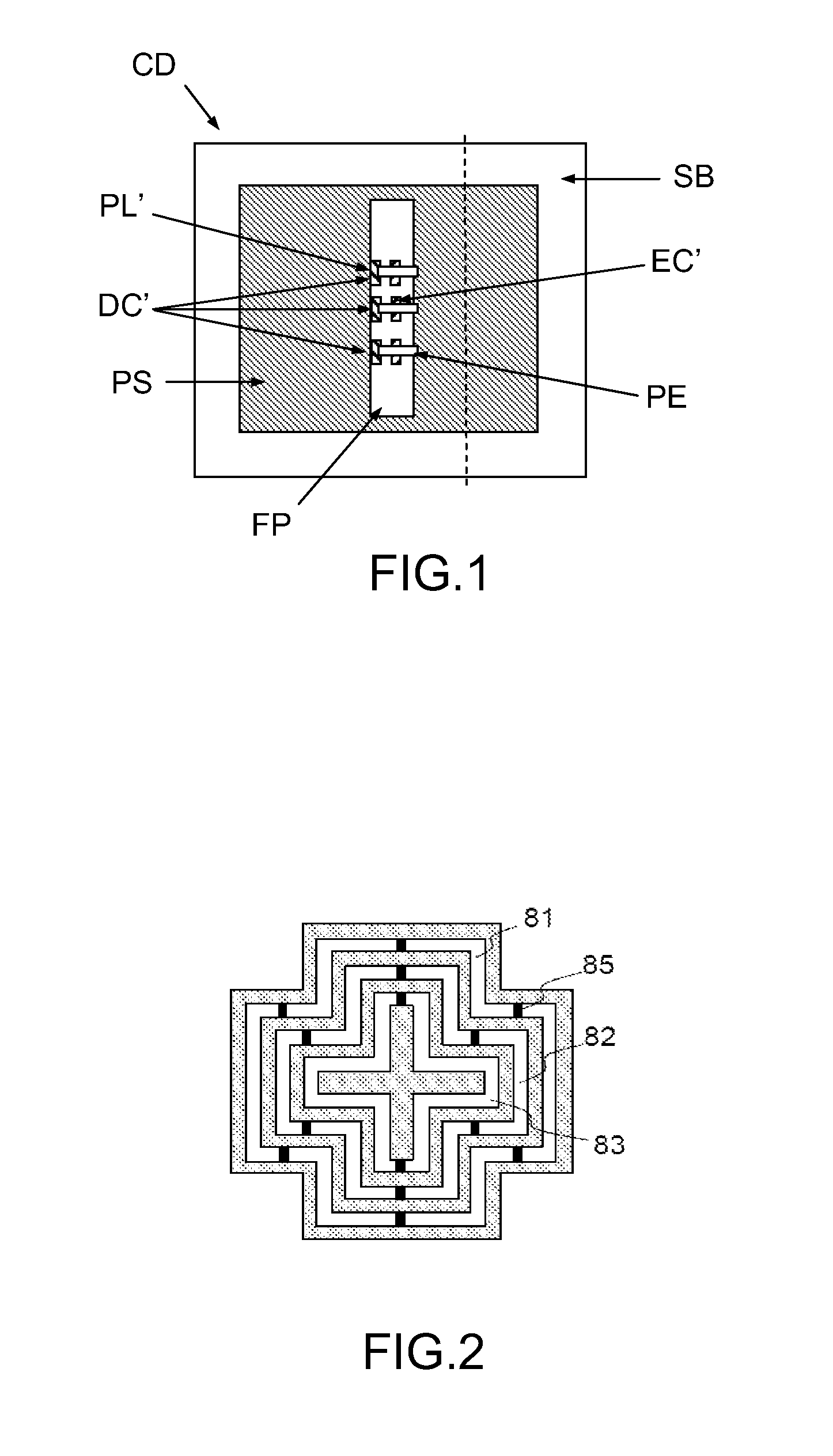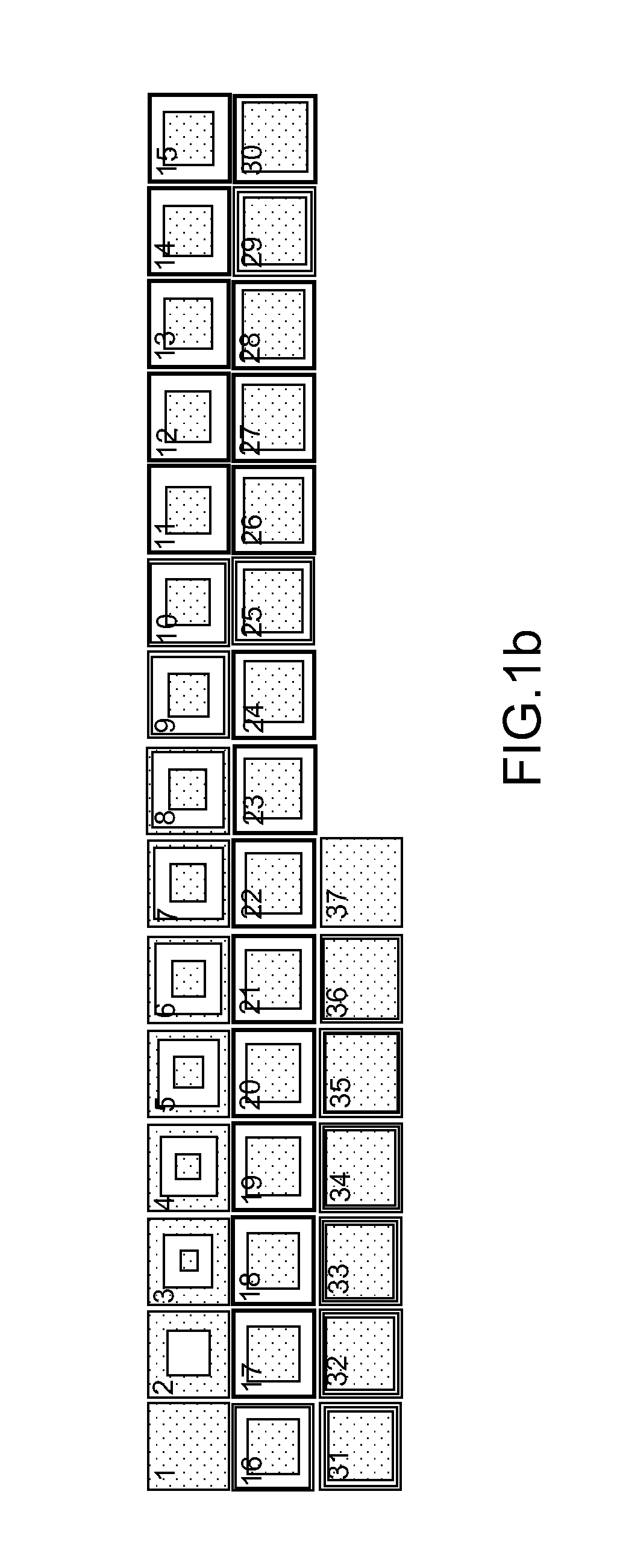Reconfigurable Radiating Phase-Shifting Cell Based on Complementary Slot and Microstrip Resonances
a phase-shifting cell and complementary slot technology, applied in the field of reconfigurable radiating phase-shifting cells, can solve the problems of difficult to obtain the phase state with little resonance of the cell, significant losses, and inability to optimize so as to reduce the frequency variation of the wave, reduce the resonant character of the cell, and be more linear.
- Summary
- Abstract
- Description
- Claims
- Application Information
AI Technical Summary
Benefits of technology
Problems solved by technology
Method used
Image
Examples
first embodiment
[0079]In a first embodiment, illustrated in FIG. 8a, the panel is composed of a multilayer dielectric substrate on whose front face the radiofrequency (RF) chips that comprise the metal pattern of the cell and the MEMS are mounted. These RF chips are then referred to as monolithic chips and, for example, made of quartz, fused silica or alumina. The dielectric substrate, made for example of RO 4003, performs the function of a spacer between the RF chips 803 and the ground plane, and enables the through-connection of the control signals to the DC chips mounted on the back face of the substrate. The routing of the control signals on the front face is then carried out within the RF chips. Microelectronics processing can be used in order to form the resistive lines, at least in sections, at the place where these lines meet slots.
second embodiment
[0080]In a second embodiment illustrated in FIG. 8b, the panel is composed of a multilayer dielectric substrate on which the metal pattern 851 of the cell is etched, and on which MEMS components 853 are mounted; this is then a hybrid design.
[0081]As illustrated in FIG. 9, control vias 901 can be disposed at the periphery of the cell (within the frame 908), or at its centre, without fundamentally altering its operation. In addition, the periodic arrangement of metal through vias on the periphery could have the same effect as a peripheral metal wall connecting the frame 908 and the ground plane. Several of these vias could then be used for routing control signals from the back face to the front face. It is also possible to connect the central patch of the cell 903 to the ground plane by a metal through via without significantly modifying its electrical behaviour. A control via 902 can therefore also be installed at this location. When this via is used for the control, it must be insul...
PUM
 Login to View More
Login to View More Abstract
Description
Claims
Application Information
 Login to View More
Login to View More - R&D
- Intellectual Property
- Life Sciences
- Materials
- Tech Scout
- Unparalleled Data Quality
- Higher Quality Content
- 60% Fewer Hallucinations
Browse by: Latest US Patents, China's latest patents, Technical Efficacy Thesaurus, Application Domain, Technology Topic, Popular Technical Reports.
© 2025 PatSnap. All rights reserved.Legal|Privacy policy|Modern Slavery Act Transparency Statement|Sitemap|About US| Contact US: help@patsnap.com



